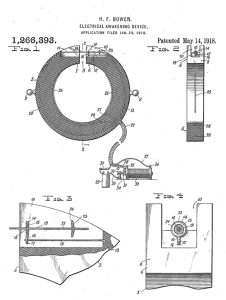This hysteria gave rise to numerous cures and treatments, as well as several inventions. Between 1856 and 1918, the United States Patent and Trademark Office approved 35 patent applications for anti-masturbation devices. As might be anticipated, the majority of these were intended for male use.
Several were based on the chastity belt principle, encasing the genitals or hands and rendering them untouchable. A lockable belt and apron device, designed by Thomas Thomas (1907, patent 852638), prevented the wearer from sleeping on his or her back and touching their groin. Henry A. Wood (1910, patent 973330) submitted a patent for ‘night mittens’ that prevented any dextrous use of the hands and fingers. There were also three patented alarm systems, designed to wake the wearer or the parents in the event of an erection.

The most bizarre contraptions, however, used pain and discomfort as a disincentive to arousal or self pleasure. Albert V. Todd (1903, patent 742814) submitted two designs: one delivered a mild electrical shock to the erectile penis, the other employed a series of spikes.

Harry F. Bowen’s machine (1918, patent 1266393) also delivered electric shocks.

More simple in its design was a “surgical appliance” suggested by James H. Bowen (1889, patent 397106). Bowen’s device consisted of a lockable metal penis cap connected to small cables that were clamped to strands of pubic hair. In the event of an erection the cables would stretch taut and pull the pubic hair, causing the wearer considerable pain.

Source: US Patent and Trademark Office database, patent numbers as listed. Content on this page is © Alpha History 2019-23. Content may not be republished without our express permission. For more information please refer to our Terms of Use or contact Alpha History.
